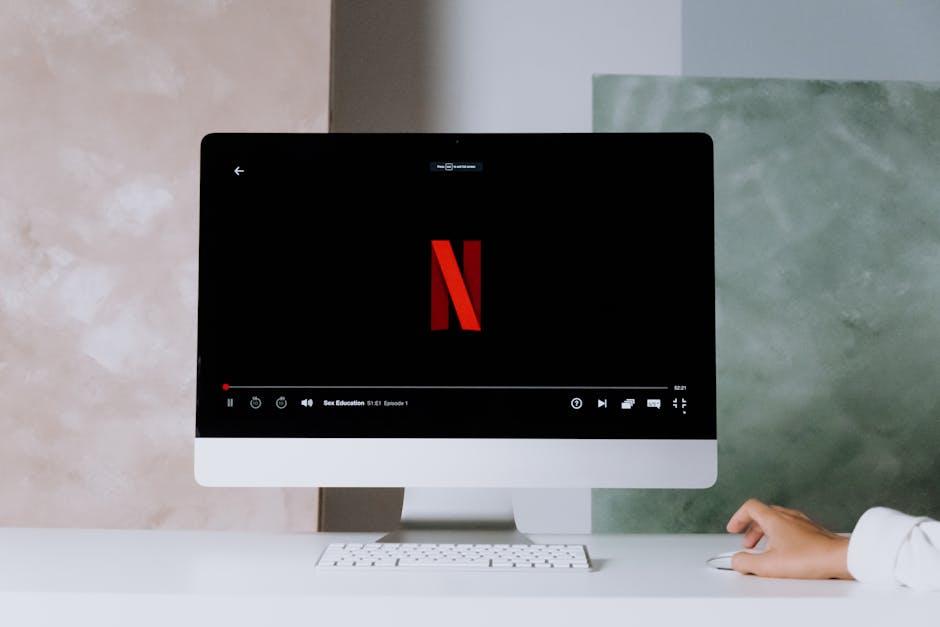In the age of digital convenience, streaming platforms have become our go-to sources for entertainment, offering vast libraries of movies, shows, and documentaries at the tap of a finger. Yet, as we revel in the luxury of instant access, a new question emerges from the depths of our data-driven lives: are these platforms providing enough options for offline viewing? In an era where connectivity can be as unpredictable as the plot twists in our favorite series, the ability to download and watch content without an internet connection is not just a perk but a necessity for many. This article delves into the intricacies of offline viewing on streaming services, exploring whether the current offerings meet the demands of an increasingly mobile and on-the-go audience. Join us as we navigate the digital divide between online streaming and offline accessibility, seeking to understand if our entertainment options are truly keeping pace with our lifestyles.
Exploring the Offline Viewing Landscape of Streaming Services
In the realm of streaming services, the ability to watch content offline has become a highly sought-after feature, particularly for those who travel frequently or have limited internet access. While many platforms offer offline viewing, the extent of this feature varies significantly, leaving users questioning whether they have enough options to satisfy their entertainment needs. Netflix, for instance, allows users to download a wide range of content, but there are still restrictions on certain titles due to licensing agreements. Amazon Prime Video and Disney+ also offer offline viewing, yet the availability and duration of downloads can differ, adding layers of complexity for users trying to navigate their viewing options.
Some platforms, such as Hulu, have begun to expand their offline capabilities, but the feature is often restricted to higher-tier subscription plans, making it less accessible for all users. This disparity raises the question: are streaming services doing enough to meet the demand for offline viewing? The reality is that while Apple TV+ and others have made strides in this area, the industry still faces challenges in terms of content rights and technological infrastructure. As the landscape continues to evolve, users are left wondering if they will ever see a day where offline viewing is as seamless and unrestricted as streaming itself.

The Limitations of Offline Access: A Closer Look at Platform Restrictions
While streaming platforms have revolutionized how we consume content, they often impose stringent limitations on offline access, leaving users with fewer options than anticipated. These restrictions vary from platform to platform, but common limitations include:
- Content Expiration: Many downloaded titles have a limited viewing period, after which they are automatically deleted or become inaccessible.
- Device Restrictions: Some services cap the number of devices on which you can store offline content, hindering flexibility for users with multiple gadgets.
- Content Availability: Not all shows or movies are available for offline viewing, often due to licensing agreements that prioritize streaming rights.
- Regional Limitations: Downloads might be restricted by geographical location, further complicating access for international travelers.
These constraints often leave users questioning the true convenience of offline viewing. While the concept is enticing, the reality can sometimes feel like a compromise rather than a feature, nudging users to remain tethered to an online connection.
Understanding User Needs: How Streaming Services Can Enhance Offline Features
In today’s fast-paced world, where connectivity can be unpredictable, streaming services have an opportunity to cater to user needs by enhancing offline features. The current limitations in offline options often leave users frustrated, especially when traveling or during internet outages. Addressing this, streaming platforms can explore several enhancements to improve user satisfaction.
- Expanded Download Options: Offering a broader selection of content for offline viewing, including entire series or curated playlists, would allow users to enjoy a more personalized experience without the constraints of an internet connection.
- Flexible Storage Solutions: Implementing adaptive storage options that adjust video quality based on available device storage could enable users to maximize their offline libraries without compromising on the content quality.
- Seamless Syncing Across Devices: Enabling automatic syncing of downloaded content across multiple devices would ensure that users can access their favorite shows and movies on any device, anytime, anywhere.
By embracing these strategies, streaming platforms can not only enhance user experience but also strengthen their competitive edge in an increasingly crowded market.

Recommendations for Expanding Offline Viewing Options on Popular Platforms
To enhance user satisfaction and meet the growing demand for flexibility, streaming platforms could consider a range of strategies for expanding offline viewing options. Firstly, offering longer download durations would be beneficial, allowing users to keep content offline for extended periods without needing to reconnect to the internet frequently. Additionally, platforms could implement partial download capabilities, enabling users to download segments of content, which can be particularly useful for those with limited storage or data constraints.
Moreover, introducing a tiered offline access model could cater to different user needs. For instance:
- Basic Tier: Allows downloads of standard quality content for short periods.
- Premium Tier: Offers high-definition downloads with longer availability and exclusive content.
- Family Tier: Facilitates multiple devices and user profiles to download content simultaneously.
Such a model could provide more tailored offline viewing experiences, ensuring that users can enjoy their favorite shows and movies even when internet access is limited or unavailable.







































